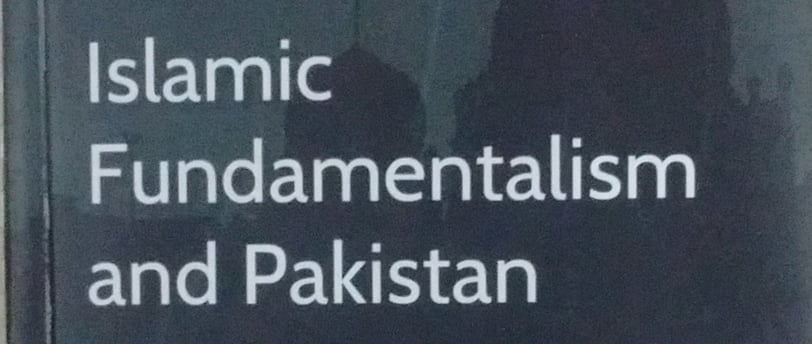Pakistan’s Encounter with Islamic Fundamentalism
Since gaining independence in 1947, Pakistan has faced an ongoing struggle to reconcile its religious identity with its democratic ambitions. Although Muhammad Ali Jinnah, the country’s founder, initially promoted a vision rooted in secular governance and religious coexistence, the nation gradually veered toward Islamic conservatism. This shift, driven by political maneuvers, regional conflicts, and global influences, has left a profound mark on Pakistan’s society, politics, and global standing.
Aman Kumar, 3rd year BA LLB
5/1/20253 min read


1. Ideals at Birth and the Gradual Religious Shift
Pakistan was envisioned as a haven for Muslims in the subcontinent, with Jinnah advocating a tolerant, inclusive nation. However, with the adoption of the Objectives Resolution in 1949, Pakistan began embedding Islamic tenets into its governance framework. This marked the start of a drift away from secularism, setting the stage for the growth of religious influence in politics.
2. Zia-ul-Haq’s Islamization Drive
The 1980s brought a dramatic transformation under General Zia-ul-Haq’s rule. Seeking to bolster his regime’s legitimacy, Zia initiated an Islamization campaign. Civil laws were amended to align with Sharia, religious courts were introduced, and school curricula were revised to reflect conservative Islamic thought. These policies not only reshaped governance but also provided fertile ground for radical ideologies to flourish.
3. The Afghan Conflict and Its Domestic Repercussions
During the Soviet-Afghan war, Pakistan served as a frontline ally of the West, channeling support to Afghan fighters. With funding and arms from the U.S. and Saudi Arabia, Pakistan’s intelligence agencies played a pivotal role in training Islamic militants. Many of these fighters and religious institutions later fueled extremist trends within Pakistan’s own borders.
4. Sectarian Conflict and Internal Divisions
The rise of fundamentalist ideologies exacerbated sectarian divisions, particularly between Sunni and Shia groups. Militant organizations like Sipah-e-Sahaba and Lashkar-e-Jhangvi emerged, targeting Shia communities and deepening religious rifts. These tensions, often fueled by foreign support, have undermined national cohesion and triggered repeated episodes of violence.
5. The War on Terror and Its Blowback
Post-9/11, Pakistan was thrust into the global spotlight as a key ally in the War on Terror. While it received international backing to combat extremism, its approach remained selective. This ambivalence allowed some militant factions to thrive, ultimately leading to the rise of the Pakistani Taliban—an internal threat born out of previously supported networks.
6. Social and Cultural Transformation
Extremism has seeped into the social fabric of Pakistan. Blasphemy laws have often been weaponized to suppress dissent, and minority communities have faced systemic discrimination. The influence of religious orthodoxy in schools, the media, and public life has fostered an environment of increasing intolerance and curtailed civil freedoms, especially for women.
7. Political Alliances with Extremist Elements
Pakistan’s political and military elite have at times engaged or aligned with radical groups for strategic benefits, particularly in relation to Kashmir and Afghanistan. This has led to a blurred distinction between governance and extremism, complicating efforts to root out militancy.
8. Impact on Foreign Relations
The presence and perceived protection of extremist groups have affected Pakistan’s international relationships. It has faced increased scrutiny from watchdogs like the Financial Action Task Force (FATF) and strained ties with neighboring countries, including India and Afghanistan. These issues have cast doubt on Pakistan’s commitment to eradicating terrorism.
9. Signs of Progress and Hope
Despite these challenges, efforts like the National Action Plan and military initiatives such as Operation Zarb-e-Azb indicate a shift in strategy. Civil society and a more engaged youth are advocating for a more inclusive and democratic Pakistan. These grassroots movements, if supported by institutional reforms, could pave the way for lasting change.
Conclusion
Pakistan’s entanglement with Islamic fundamentalism is deeply rooted in a complex interplay of historical and political forces. Reversing decades of radicalization will require a multi-pronged approach involving legal reform, educational overhaul, and greater international cooperation. Yet, by reclaiming the inclusive ideals of its founding, Pakistan has the potential to foster a more open and stable society.
References
· Graham Fuller, RAND Report on Islamic Fundamentalism in Pakistan
· Aliva Mishra, Islamic Fundamentalism in South Asia
· Dynamics of Religious Extremism in Pakistan
· Madrassa Education and Fundamentalism
· Why Pakistan Fails to Stop Jihadi Attacks - TIME
· Militant Attacks During Ramadan - AP News
· Sialkot Lynching and Religious Hate - TIME
· Islamic State Blast in Pakistan - The Guardian
· IDSA Study on Regional Implications
Because Every Legal Mind Deserves a Great Conversation.
Legaltea.in@gmail.com
+91 6284295492
MSME Certified
© 2025 Legal Tea. All rights reserved.


